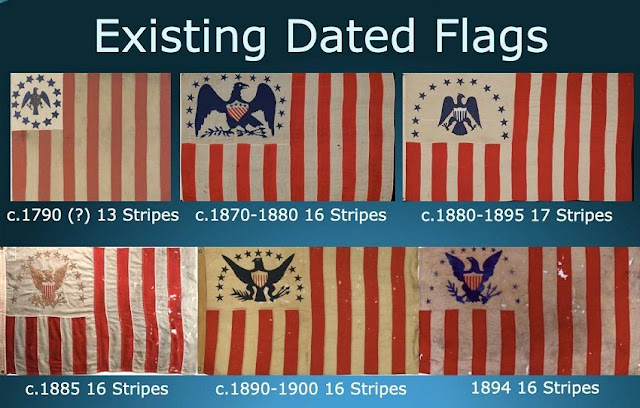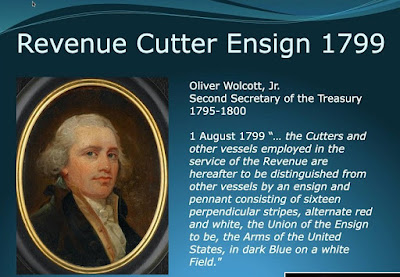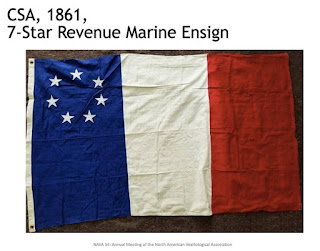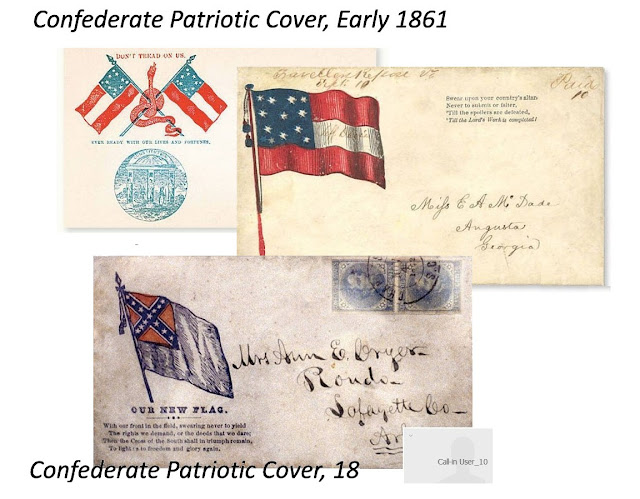Edwin Jackson gave a rich presentation on flags that have appeared on stamps across the world. Interesting to note is the first
adhesive postage stamp to be created was in 1840, and is known as the black penny. This official government postage sticker was created on May 1, 1840. It featured the profile of Her Majesty Queen Victoria. In essence it is one of the most valuable stickers that anyone can hope to add to their sticker collection.
 |
| 5¢ CSA Stamp |
Edwin Jackson provided a spectacular array of historical stamps and contemporary postal cards used during the US Civil War. One Confederate Post Card had the a motto "DON'T TREAD ON US" with a red snake tied up on two early versions of the Confederate Flag. Underneath it also reads "EVER READY WITH OUR LIVES AND FORTUNES" which is just above the Georgia State Seal in blue. The lower post card features the second version of the Confederate Flag with what could have become the Confederate Pledge of Allegiance:
With our front in the field, swearing never to yield
The rights that we demand, or the deeds that we dare;
Then the Cross of the South in triumph remain,
To light is to freedom and glory again.
The Confederacy was able to create stamps of its own. You can see a cancelled 5¢ 'CONFEDERATE STATES" stamp that features Jefferson Davis. It was cancelled on November 4, 1862 in South Carolina.
 Jackson showed us a stamp from El Salvador that matched with the pattern of the US flag but with inverted colours.
It really is too bad that El Salvador did not keep its original design flag from 1865. It would make it unique among her neighboring flags of Honduras and Nicaragua, which looks way too similar.
Jackson showed us a stamp from El Salvador that matched with the pattern of the US flag but with inverted colours.
It really is too bad that El Salvador did not keep its original design flag from 1865. It would make it unique among her neighboring flags of Honduras and Nicaragua, which looks way too similar.
Jackson showed to us the first stamp to ever feature a flag. It was with Costa Rica with the Porte ½ Real in 1863. However it is nearly impossible to make out the flags.
Finally, the first US stamp to feature a flag from the USA was make in 1869 with US stamp # 121. Although it was not colour prefect, it was for 30¢. This was when the Union had 37 states, when Nebraska was the Baby in 1867. The 38th state would be Colorado which was still a territory.




















